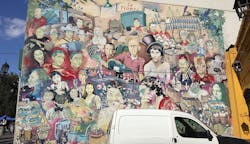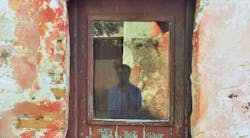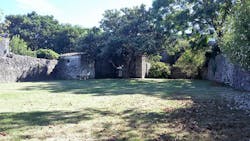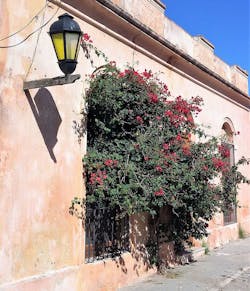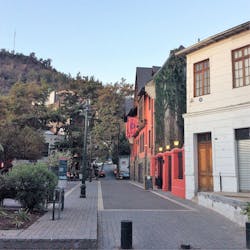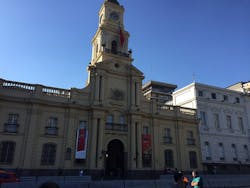Architectural Postcards from Chile and Uraguay
It’s a pleasure to stroll the streets of Colonia, Uruguay, and realize that in those homes you admire, you could also live.
People do. And it’s not too expensive.
Uruguayans are to Argentineans what the Italians are to the French. Same people, better mood. Just an hour’s ferry ride from Buenos Aires, you can find Colonia, Uruguay, one of the prettiest places on earth. Civilized and well preserved, you can enjoy a stroll through colonial streets lined with quaint, colorful, well warn homes for humans.
Unlike many colonial cities, and "urban" downtowns, Colonia is not a made-for-tourists destination, it’s simply a city that has kept its character intact.
Builders often overlook the warm appeal of aging and patina, the unkempt. If you see your work as art, and not just craft, you may refine your eye to see how faded beauty exceeds brand new -- something the makers of bluejeans know, they come pre-distressed, and hairdressers that will style you a bedhead, the wilted lettuce served at upscale restaurants, or the overgrown hedges and wild grasses at trendy resorts that provide an aesthetic edge over the trim and tidy golf course look.
Santiago, Chile
As the last stop, having come so far, on our way home we took a long layover in Santiago, Chile. A city that didn't impress me as much as I’d look forward to. But as in almost all cities, I still found enough architectural eye candy for an afternoon.
The old neighborhoods are my favorite in most cities, Santiago is no exception. Sparkling new city centers (with the exception, maybe, of Medellin, Colombia) cannot rival the grace and style of old European masters. These masters came to the new world and gave us many great neighborhoods, or barrios, like this residential block in downtown Santiago, el Barrio Yungay.
Cut off from high-rises and commercial activity of the city center; the neighborhood seems frozen in time, while it houses the vanguard of Santiago’s young bohemian community.
In every South American city, and Mexico (which is part of North America and Latin America), you’ll find the plaza central, or central square. Look around. You’ll see the same characteristic buildings surrounding the park:
On one side the civic building, city hall, state capital, or the federal capital. On the other, a great church, cathedral or basilica. On either side, a financial building, such as the central bank, and opposite it, a cultural center, such as a great theater.
Between them, commerce, shops, and restaurants. In the center, the park, often with statues of political heroes, and a kiosk for cultural events, such as festivals and dances.
In the center of Santiago, it’s no different. The cultural building is an art museum.
On the corner, the old national bank.
Latin American cities know how to dress up dead building facades with murals. Only Saint Petersburg, Florida, in the United States, has done something similar. Once Saint Petersburg was a dreary city full of blank building faces, now tourists come from afar to admire the artwork. A blank facade is also a blank canvas. Fill it.
In Santiago, once blank walls now celebrate the city’s history and cultural icons, such as the many portraits of poet Pablo Neruda. In the barrio of San Miguel, pictured, the city developed a street art initiative called Museo a Cielo Abierto, or Open-Air Museum.
If you live in or know of a drab neighborhood—as was San Miguel in Chile, or Boca in Buenos Aires—you may want to follow the lead of Saint Petersburg, Florida, and have the neighborhood artists (instead of Joe, the house painter) lay down the final coat. You may turn your neighborhood into a tourist attraction.
— Fernando Pagés Ruiz is ProTradeCraft's Latin America Editor. He is currently building a business in Ecuador and a house in Mexico. Formerly a builder in the Great Plains and the Mountain States, Fernando is also the author of Building an Affordable House and Affordable Remodel (Taunton Press).
